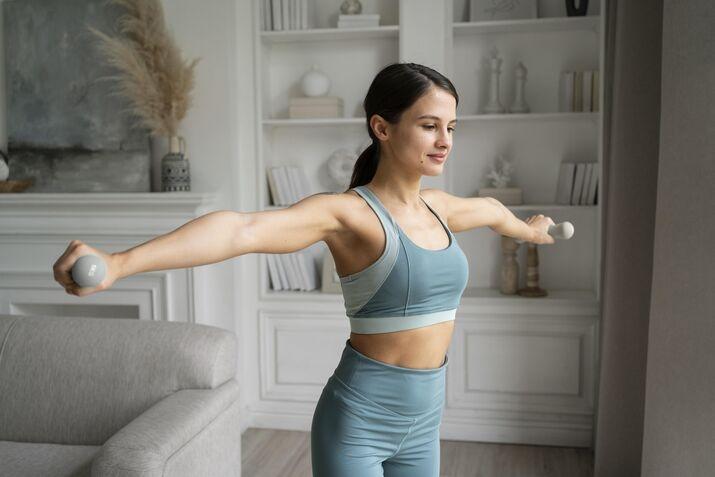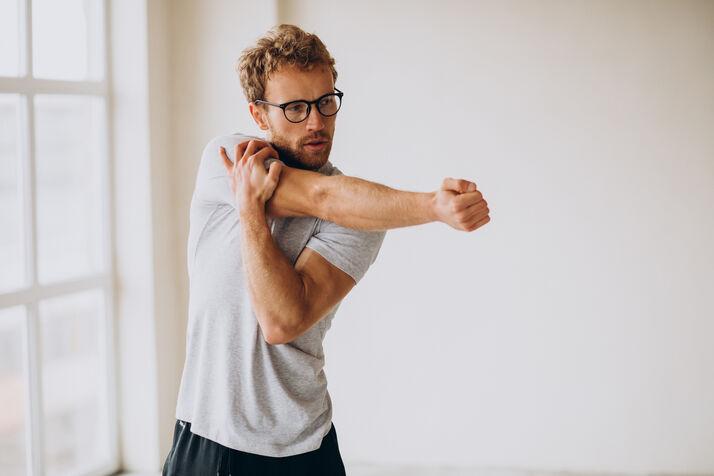
That nagging shoulder pain is more than just an inconvenience. It affects your sleep, makes everyday tasks difficult, and perhaps even keeps you from your favourite activities. If you’ve been diagnosed with a rotator cuff injury, you’re not alone. Rotator cuff tears become more common as we age, with the prevalence of full-thickness tears rising from 0% in people in their 20s and 40s to 36.6% in those in their 80s. Thankfully, the good news is that proper shoulder rehab exercises can make a massive difference in your recovery.
Understanding Your Rotator Cuff
Your rotator cuff comprises four muscles that work together to stabilise your shoulder joint while enabling movement in multiple directions. When these muscles or their tendons become damaged through injury or overuse, the result is pain, weakness, and limited motion that can severely impact your quality of life.
Think of your shoulder as a golf ball (the head of your arm bone) sitting on a tee (your shoulder socket). The rotator cuff muscles form a sleeve around this joint, helping the ball move smoothly while staying properly positioned.
Most rotator cuff problems fall into three categories: impingements (where tendons get pinched between bones), tendinitis (inflammation of the tendons), or tears (partial or complete separations of the tendon from bone). Whether your injury resulted from repetitive movements, a sudden trauma, or age-related degeneration, the road to recovery involves similar principles of progressive rehabilitation.
The likelihood of having a full-thickness tear is higher in your dominant arm or the one you use most frequently for daily activities. This makes sense when you consider how much more we rely on our dominant side for everything from writing to lifting.
Before Starting Shoulder Rehab Exercises
Knowing the difference between therapeutic discomfort and harmful pain is essential for successful recovery. Mild stretching sensations are normal during exercises, but sharp, stabbing, or increasing pain means you should stop immediately. Remember: quality of movement always trumps quantity or intensity, especially in the early stages.
Phase 1: Gentle Mobility Exercises
The first goal of shoulder rehab exercises is restoring pain-free range of motion. These gentle movements form the foundation for all subsequent strengthening work.
Pendulum Exercise
Stand beside a table and place your uninjured hand on it for support. Lean forward slightly, allowing your injured arm to hang down relaxed. Make small circles with your arm, letting gravity do the work rather than your muscles. Perform for 30 seconds in each direction, several times daily.
Doorway Stretch
This simple stretch is excellent for regaining forward flexibility in your shoulder. Stand in an open doorway with your arms out to the sides, elbows bent at 90 degrees. Gently lean forward until you feel a mild stretch across your chest and front shoulders. Hold for 15-30 seconds and repeat 3-4 times.
Phase 2: Early Strengthening
It’s time to begin gentle strengthening shoulder rehab exercises once you’ve regained a reasonable range of motion and your pain has decreased. This phase focuses on rebuilding the stabilising strength of your rotator cuff muscles.
Isometric Contractions
These exercises involve contracting muscles without movement so they’re safe for early recovery. Stand facing a wall with your palm against it, elbow bent at 90 degrees. Then, push gently into the wall without moving your arm. Hold for 5-10 seconds, then release. Repeat in various positions to target different parts of the rotator cuff.
Band Exercises for Rotation
Internal and external rotation exercises using resistance bands are cornerstone shoulder rehab exercises for rotator cuff recovery.
For external rotation, secure a band to a doorknob, hold it with your injured arm, and slowly rotate your forearm outward while keeping your elbow tucked against your body. Perform 10 repetitions, gradually building to 3 sets as tolerance improves.
Meanwhile, for internal rotation, face the opposite direction and pull the band across your body. These movements specifically target the subscapularis and infraspinatus muscles, which are commonly involved in rotator cuff injuries.

Phase 3: Progressive Strengthening
More challenging shoulder rehab exercises can finally be introduced as your shoulder improves to build on the foundation established in earlier stages. This way, you can progressively increase the demands on your recovering rotator cuff.
Standing Row
This exercise strengthens your shoulder blade muscles, which provide crucial support for the rotator cuff. Secure a resistance band to a doorknob and stand facing it.
To do this, pull your elbow straight back, squeezing your shoulder blade toward your spine. Focus on controlled movement in both directions. Complete 3 sets of 10 repetitions.
Y-Raises
Stand with arms extended downward at a slight angle, forming a Y shape. With thumbs pointing up, slowly raise your arms until they’re at shoulder height. Lower slowly back down. This shoulder rehab exercise targets the often-injured supraspinatus muscle. Begin without weights, adding very light resistance only when the movement is pain-free.
Functional Recovery Exercises
The ultimate goal of shoulder rehab exercises is returning to normal activities without pain. These functional movements help bridge the gap between isolated strengthening and real-world tasks.
Controlled Reaching
Practice reaching for objects at different heights, focusing on smooth shoulder mechanics. Start with lightweight items placed on shelves at shoulder height. Gradually expand to higher and lower positions as your comfort allows.
Rotational Activities
Many daily tasks require shoulder rotation. Practice light activities like turning doorknobs, opening jars (unscrew easy lids), or washing your opposite shoulder. Focus on using proper form rather than compensating with other body parts.
Exercises to Avoid During Recovery
Certain movements can slow your recovery or even worsen your injury. While rebuilding strength with appropriate shoulder rehab exercises, avoid heavy the following:
- Overhead lifting (puts significant stress on the healing tissues)
- Bench presses (compresses already inflamed structures)
- Behind-the-neck movements (puts the shoulder in vulnerable positions)
- High-impact activities involving jerking or sudden directional changes
Instead, stick with controlled, progressive shoulder rehab exercises that respect your current limitations while gently expanding your capabilities.
Supporting Your Recovery
The effectiveness of shoulder rehab exercises can be improved by several complementary approaches.
For instance, proper nutrition rich in protein and anti-inflammatory foods supports tissue healing. This can include:
- Oily fish
- Berries
- Leafy greens
- Avocados
- Olive oil
- Turmeric
- Ginger
- Green tea
- Nuts
- Whole grains
Adequate sleep, ideally not on your injured shoulder, gives your body time to repair. Ice therapy after exercise can help manage any post-exercise soreness, especially in early recovery stages.
Keep in mind that consistency with your shoulder rehab exercises program matters more than intensity. A few quality movements performed regularly will yield better results than sporadic, aggressive workouts that might aggravate your injury.
Prevention and Maintenance
Once you’ve recovered, maintaining shoulder health becomes the priority. Incorporate simple rotator cuff shoulder rehab exercises into your regular fitness routine, even when your shoulder feels fine. Pay attention to your posture throughout the day because slouched positions increase strain on the shoulder complex.
If you’re returning to sports or demanding physical activities, working with a physiotherapist to develop sport-specific shoulder rehab exercises can help prevent re-injury and optimise performance.

When to Seek Additional Help
While most rotator cuff injuries improve with appropriate shoulder rehab exercises, some require additional intervention. Contact your healthcare provider if your pain worsens or doesn’t improve after several weeks of consistent exercises, or if you experience new symptoms like numbness or tingling. These could indicate a more complex injury that needs medical attention beyond self-directed rehabilitation.
A Word From Rehab Lab Physio
Recovering from a rotator cuff injury requires patience and a commitment to shoulder rehab exercises. Following the stages outlined in this guide, from gentle mobility work to functional strengthening, can help your shoulder heal properly and return to your normal activities.
That said, remember that healing isn’t linear. Some days will feel better than others. Just trust the process, listen to your body’s signals, and most importantly, give yourself time. Your shoulder has incredible healing capacity. When you support it with these shoulder rehab exercises, you’ll be back to reaching, lifting, and moving confidently again.
Our expert physiotherapists at Rehab Lab Physio can create a personalised shoulder rehabilitation program just for you to accelerate your recovery. Contact us today.

